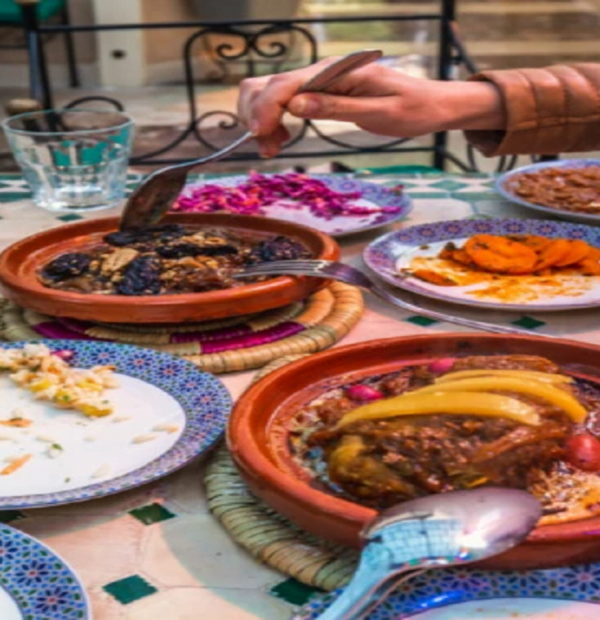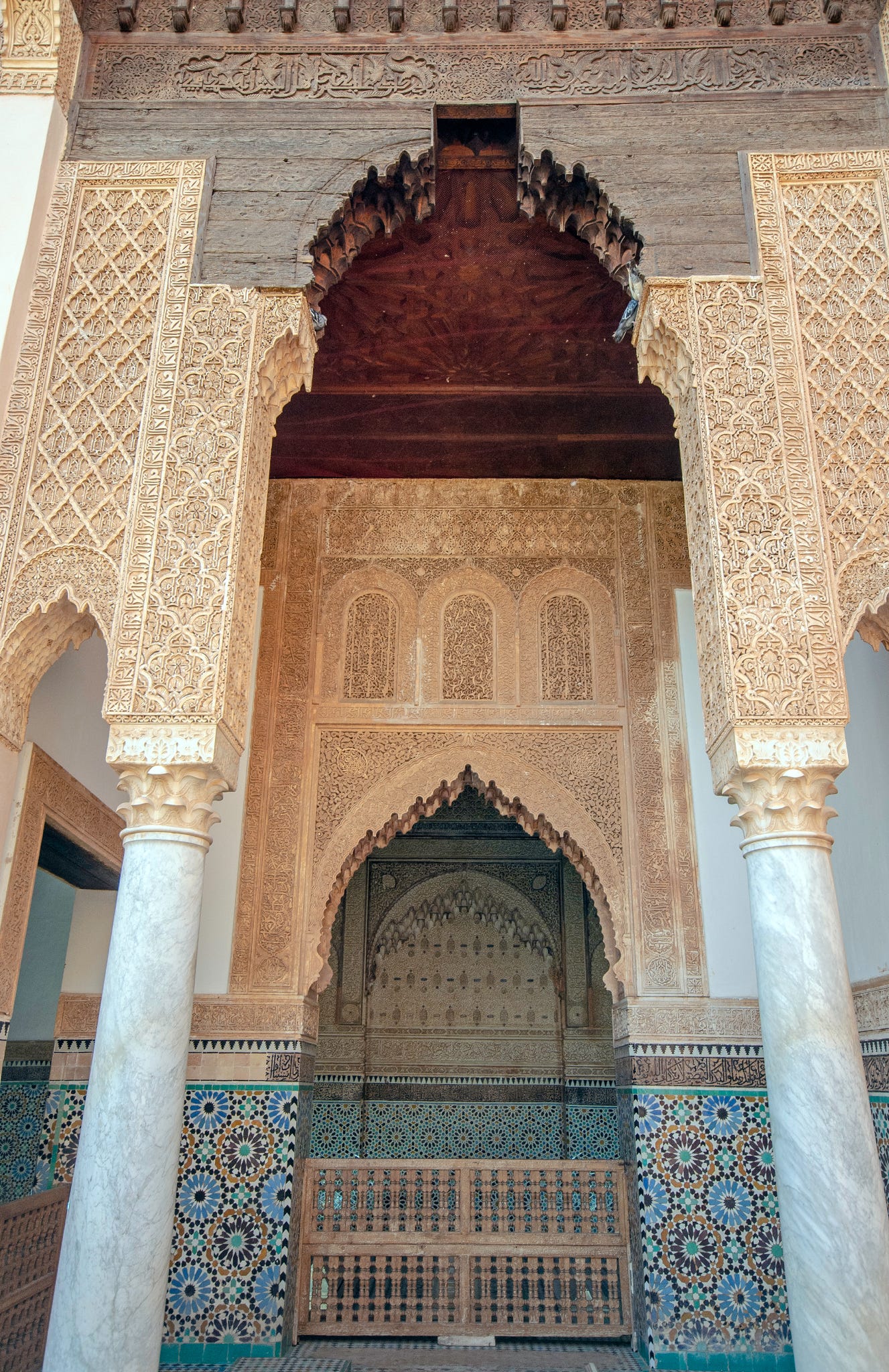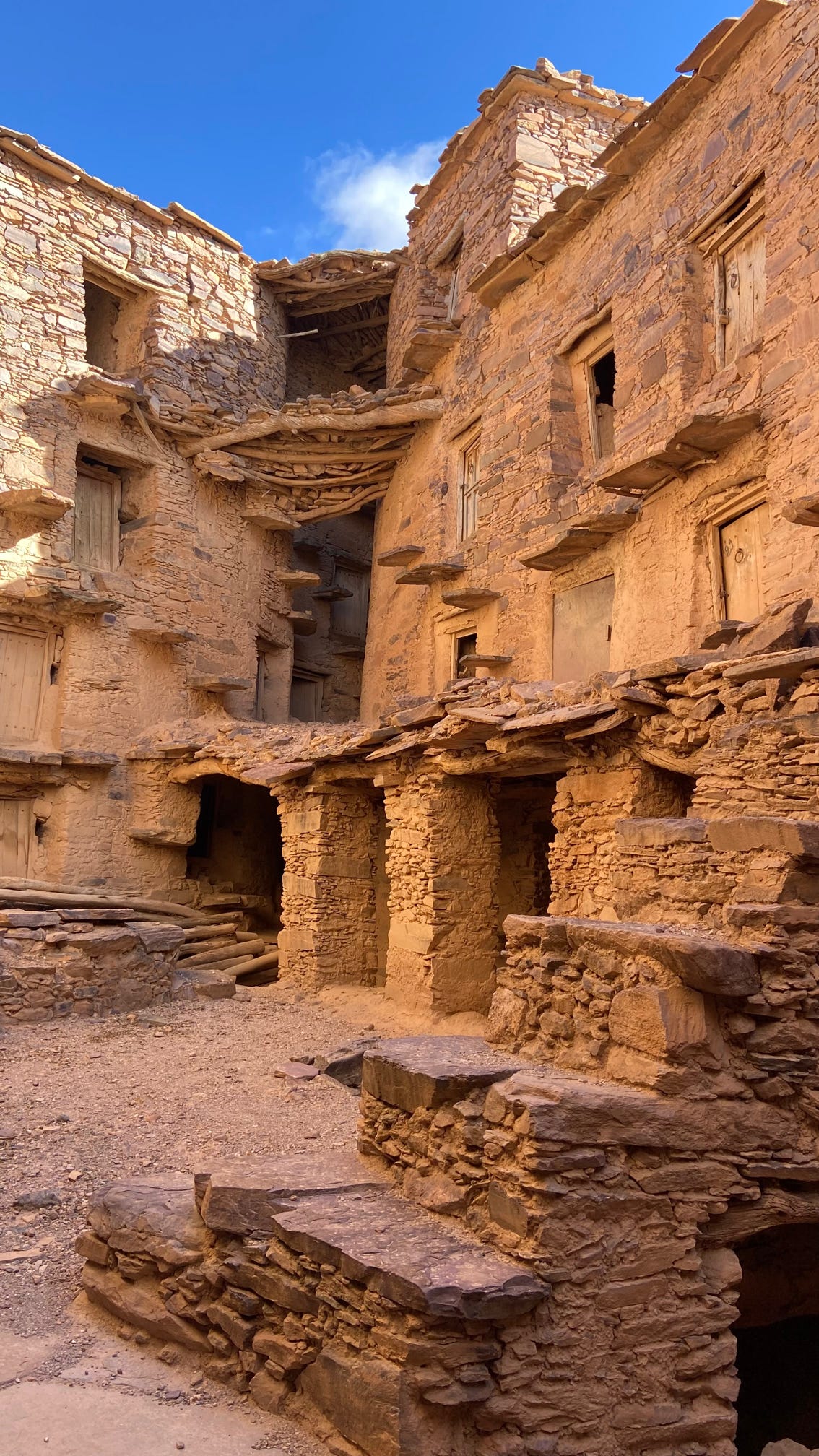
All About Tajine in Morocco:The Magic World with its 7 Spices
Moroccan cuisine is renowned for its tantalising flavours, aromatic spices, and vibrant colours, offering a sensory delight for food enthusiasts. At the heart of this culinary tradition lies the iconic dish known as Tajine. Lets talk all about Tajine in Morocco, we invite you to embark on a gastronomic journey as we explore the origins, preparation, and cultural significance of Tajine in Morocco.
All About Tajine in Morocco – A Taste of Tradition
Tajine is more than just a dish, although Tajine is also the name of the dish! It embodies the essence of Moroccan culinary heritage. This slow-cooked stew takes its name from the earthenware pot it is cooked in, with a distinctive cone-shaped lid. Passed down through generations, the art of preparing Tajine represents a fusion of Berber, Arab, and Andalusian influences, making it a true reflection of Morocco’s diverse cultural tapestry. It has origins dating back to the Berbers of North Africa, the slow-cooking technique allowing them to make the most of limited ingredients in harsh desert conditions.
All About Tajine in Morocco – A Melting Pot of Flavours
The beauty of Tajine lies in its ability to bring together an array of ingredients, resulting in a harmonious blend of flavors. Traditionally, Tajine puts together tender meat (such as lamb, chicken, or beef), with an assortment of vegetables, aromatic herbs, and a subtle combination of spices such as cumin, ginger, saffron, and cinnamon. Moroccan tajines are known for their complex mixture of tastes and fragrant spice blends creating a thrilling taste experience. These spices not only enhance the flavor but also have health benefits.
All About Tajine in Morocco – Slow and Steady
One of the secrets behind the amazing taste of Tajine lies in its slow-cooking process. The earthenware pot preserves and enhances the flavours, allowing them to mix together over low heat. The result is a succulent dish where the meat becomes incredibly tender and the vegetables soak up the rich aromas, creating a culinary masterpiece that captures the essence of Moroccan cuisine.
All About Tajine in Morocco – Variety and Versatility
A Tajine offers endless possibilities for customising, catering to a range of dietary preferences. From vegetarian delights featuring seasonal vegetables, chickpeas, and dried fruits to seafood variations with fish or prawns, there is a Tajine to suit every taste. The use of regional specialties like preserved lemons, olives, and almonds adds an extra dimension to the dish, creating a great combination of flavours.
All About Tajine in Morocco – A Culinary Experience
A Tajine is not merely a meal, its an experience to be shared. In Moroccan households, gathering around a steaming Tajine pot is a cherished tradition, bringing family and friends together. The act of breaking bread and savouring the communal feast fosters a sense of connection, warmth, and hospitality, making Tajine an embodiment of Moroccan culture and hospitality.
All About Tajine in Morocco – Exploring the Culinary Landscape
While the Tajine is often associated with Marrakech, this culinary gem can be found throughout Morocco. From the coastal cities of Casablanca and Essaouira to the imperial cities of Fez and Rabat, each region adds its own unique twist to the beloved dish. Exploring the diverse regional variations of a Tajine is like embarking on a flavourful voyage across the country.
Tajine is not just a culinary delight, it’s a symbol of Moroccan culture, tradition, and warm hospitality. Exploring the rich history and flavors of Tajine offers a deeper understanding of Morocco’s gastronomic heritage. So, whether you’re savoring a fragrant lamb Tajine in the bustling souks of Marrakech or enjoying a seafood Tajine by the picturesque coast, let this iconic dish transport you to the heart of Morocco’s vibrant culinary landscape.
Tours and Tickets by Moroccan Madness Adventures






